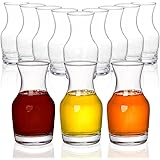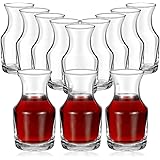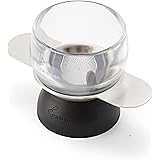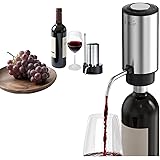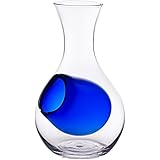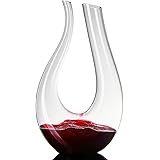Mastering the Art of Food and Wine Pairing: An Expert’s Guide to Tasting
Research indicates that approximately 80% of wine consumers seek advice on food and wine pairing, yet many find the process daunting. The brief, incisive video above aptly introduces a foundational principle: treating wine as an indispensable ingredient in a culinary creation. Successfully testing a food and wine pairing involves more than mere preference; it requires a systematic approach to understanding how elements interact on the palate, culminating in a harmonious, new flavor experience. This comprehensive guide delves into the intricate methodologies and sensory science behind effective food and wine evaluation, transforming guesswork into informed decisions.
The Palate’s Symphony: Deconstructing Sensory Interactions in Wine Pairing
When you take a bite of food and immediately sip wine, the objective is to achieve a synergistic effect where both components elevate each other, creating a novel sensation on the palate. This phenomenon, often referred to as a “third flavor,” is the hallmark of a truly successful food and wine pairing. Understanding the fundamental characteristics of both food and wine is paramount before attempting to orchestrate this sensory symphony. Consequently, dissecting each element’s primary attributes becomes the initial step in a refined pairing strategy.
Wine as an Ingredient: Beyond the Bottle
Consider wine not merely as a beverage but as a complex ingredient replete with its own flavor profile, texture, and structural components. A wine’s acidity, sweetness, tannin, alcohol, body, and aromatic compounds all play pivotal roles in its interaction with food. For instance, high-acidity wines such as Sauvignon Blanc can cut through rich, fatty dishes, much like a squeeze of lemon. Conversely, a powerfully tannic Cabernet Sauvignon might overwhelm delicate fare but finds its balance with protein-rich red meats, where tannins bind to proteins, softening the wine’s astringency.
Furthermore, the perceived body of a wine, from light-bodied Pinot Grigio to full-bodied Syrah, must align with the weight and intensity of the food. A light salad demands a wine that will not overshadow its subtle flavors, whereas a hearty stew requires a wine with sufficient structure and concentration to stand alongside it. The specific fruit characteristics—be it red berry, citrus, stone fruit, or tropical notes—and any secondary or tertiary aromas from oak aging or bottle maturation further contribute to the wine’s ingredient profile. Therefore, thoughtful selection involves a deep appreciation for the wine’s inherent attributes.
Core Principles of Food and Wine Pairing: Congruent vs. Complementary
Mastering food and wine pairing fundamentally revolves around two primary strategies: congruent pairings and complementary pairings. Each approach aims to achieve balance and enhance the overall dining experience, but through distinct mechanisms. Expert practitioners often employ both, depending on the desired outcome and the specific characteristics of the food and wine components involved.
Congruent Pairings: Seeking Similarity
A congruent pairing seeks to match the flavors, aromas, and textures of the food and wine, creating an experience where they mirror each other. The goal is to intensify shared characteristics, leading to a unified, often richer, sensory profile. For example, a sweet dessert wine like Sauternes paired with a crème brûlée amplifies the caramel and vanilla notes in both, while also harmonizing the sweetness levels. Similarly, an earthy Pinot Noir, with its mushroom and forest floor nuances, often finds a congruent partner in dishes featuring truffles or wild mushrooms, where shared earthiness is celebrated. Moreover, the body and weight of the wine should align with the food to prevent either component from overpowering the other. This strategy often results in a deeply satisfying and cohesive flavor experience.
Complementary Pairings: Embracing Contrast
In contrast, a complementary pairing focuses on balancing differing characteristics, where the food and wine contrast each other in a way that creates harmony. This approach often involves using one element to mitigate or enhance a specific attribute of the other. Consider the classic pairing of a high-acid, crisp Sauvignon Blanc with a rich, fatty goat cheese; the wine’s acidity cuts through the cheese’s creaminess, cleansing the palate and enhancing its tang. Another example is a sparkling wine with fried chicken, where the effervescence and acidity of the wine cut through the fat and richness of the fried food, providing a refreshing counterpoint. Consequently, complementary pairings often highlight aspects of both the food and wine that might otherwise be overlooked, creating a dynamic and exciting interaction on the palate. The key is to ensure the contrast leads to balance, not conflict.
The Science of Taste: Understanding Key Interactions
The ability to accurately test and assess food and wine pairings hinges on a profound understanding of how basic taste components—sweet, sour, salty, bitter, and umami—interact with the structural elements of wine. These interactions are not merely subjective preferences but are governed by complex chemosensory reactions on the palate. Therefore, a systematic approach to evaluating these elements is critical for any discerning enthusiast or professional.
Navigating the Flavor Matrix: Wine’s Response to Food Elements
- Acidity: High-acid foods generally demand wines with equal or higher acidity to avoid making the wine taste flat or flabby. Conversely, high-acid wines can balance rich, fatty, or salty foods, providing a refreshing counterpoint.
- Sweetness: When pairing sweet foods, the wine must always be sweeter than the dish; otherwise, the wine will taste tart and bitter. Dessert wines often possess intense sweetness to stand up to various confections.
- Saltiness: Salt enhances fruit flavors in wine and can soften tannins. Salty foods pair exceptionally well with high-acid or sparkling wines, which cut through the saltiness, or with sweet wines, where salt provides a delightful contrast.
- Bitterness: Both food and wine can exhibit bitterness (e.g., radicchio, kale, oak tannins in wine). Pairing bitter foods with tannic wines can intensify the bitterness unpleasantly. Seek wines with less tannin or those that offer a sweet or savory contrast.
- Umami: This savory taste, found in mushrooms, aged cheeses, and cured meats, can make wine taste more astringent, bitter, and alcoholic, while fruitiness may diminish. Low-tannin, high-acid, or fruit-forward wines often perform best with umami-rich dishes.
- Fat: Rich, fatty foods typically benefit from wines with high acidity or strong tannins. Acidity “cleanses” the palate, while tannins bind to proteins and fats, softening the wine’s texture and creating a balanced mouthfeel.
The Practical Methodology: How to Test a Food and Wine Pairing Effectively
The video above highlights the immediate “bite then sip” technique, a fundamental approach to evaluating pairings. However, a more structured methodology yields deeper insights and allows for precise adjustments. Adopting a systematic tasting protocol ensures consistent and reliable assessment of interactions. Furthermore, this method helps to identify both successes and areas for refinement in your food and wine pairing endeavors.
A Step-by-Step Tasting Protocol for Evaluating Pairings:
- Taste the Food First: Begin by taking a thoughtful bite of the food, allowing its flavors and textures to fully register on your palate. Pay attention to its primary characteristics: sweetness, acidity, saltiness, fat, bitterness, and umami. Note its intensity and complexity.
- Cleanse Your Palate: Before tasting the wine, ensure your palate is neutral. A sip of water or a plain cracker can reset your taste receptors, preventing residual food flavors from influencing your initial wine perception.
- Taste the Wine Alone: Sip the wine, letting it coat your mouth. Identify its key attributes: fruit profile, acidity, tannin, sweetness, body, and alcohol level. Consider its overall intensity and structural balance.
- The Critical Interaction: Bite, Then Sip: Now, take another bite of the food. As you are still chewing or immediately after swallowing, take a sip of the wine. Allow the food and wine to mingle briefly on your palate. This immediate juxtaposition is where the magic (or the conflict) happens.
- Analyze the Result: This is the most crucial step. Ask yourself:
- Did a new, harmonious flavor emerge?
- Did the wine taste better, worse, or unchanged with the food?
- Did the food taste better, worse, or unchanged with the wine?
- Were any of the wine’s desirable qualities (fruit, freshness) diminished?
- Were any of the food’s desirable qualities (sweetness, richness) overwhelmed?
- Did the pairing create balance, contrast, or conflict?
- Does the mouthfeel enhance or detract from the experience?
- Refine and Re-evaluate: Based on your analysis, consider adjustments. Perhaps the wine needs more acidity for a fatty dish, or a less tannic wine for a bitter one. Experimentation with different wines or even slight modifications to the food’s seasoning can yield remarkable improvements in your food and wine pairing.
Through diligent practice and a keen focus on these sensory interactions, anyone can hone their ability to discern truly exceptional food and wine pairings. The journey toward mastering this craft involves continuous tasting, critical analysis, and a willingness to explore a vast spectrum of flavors. Therefore, embracing the iterative process of tasting, analyzing, and refining your food and wine pairing selections ultimately leads to more profound and enjoyable culinary experiences.


